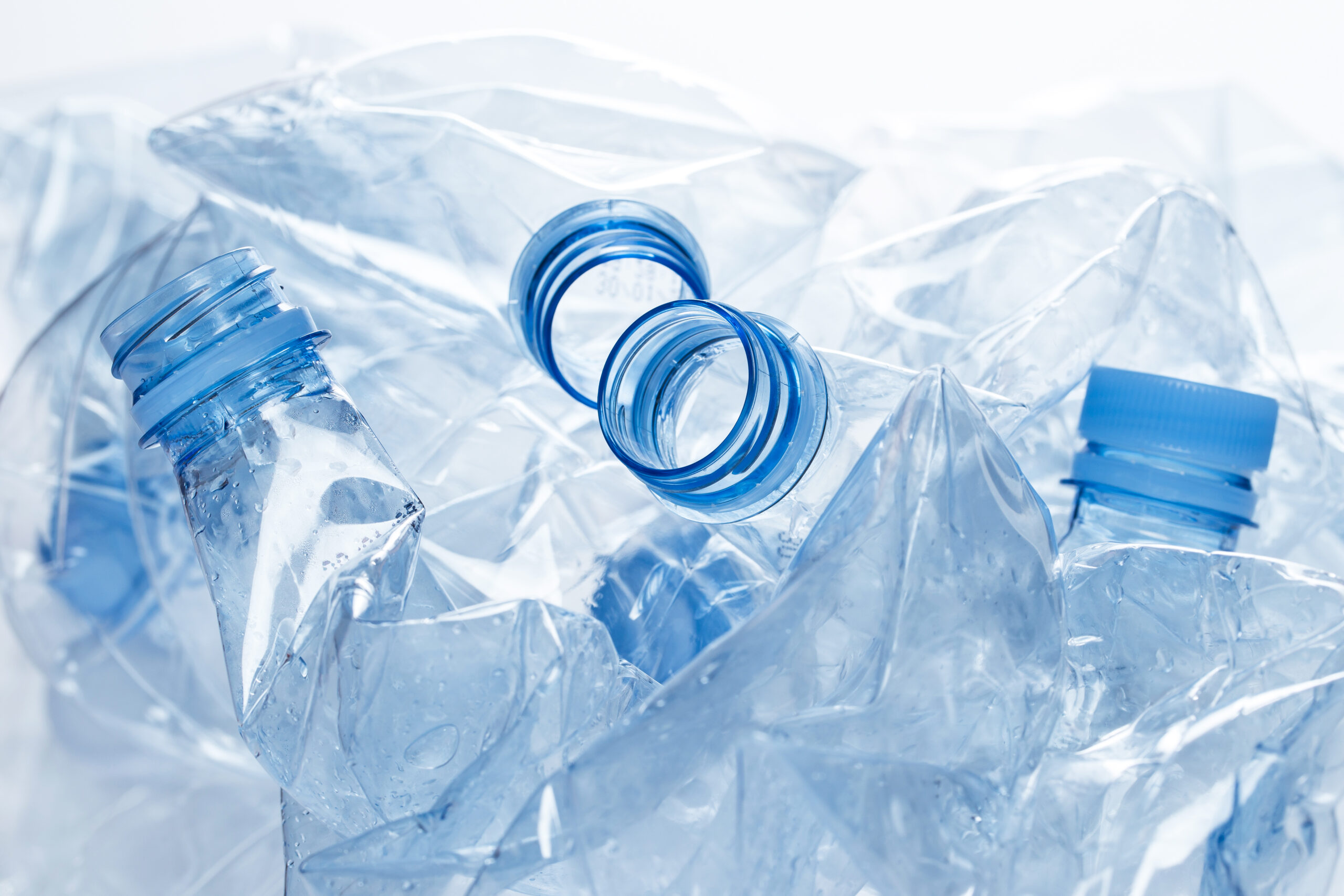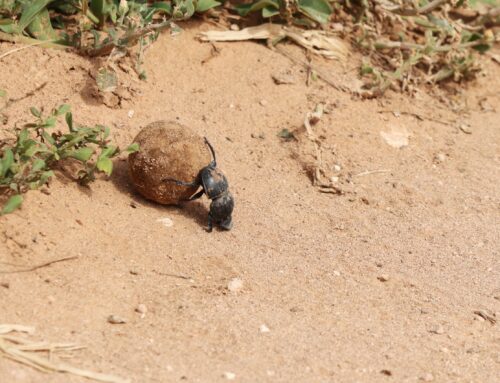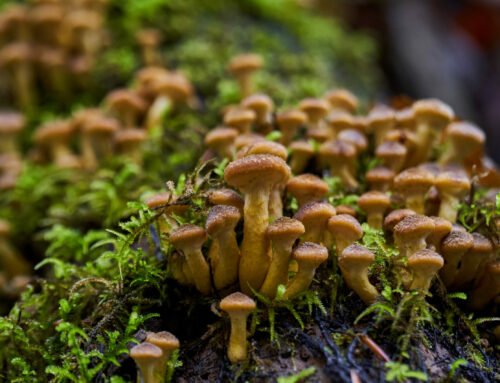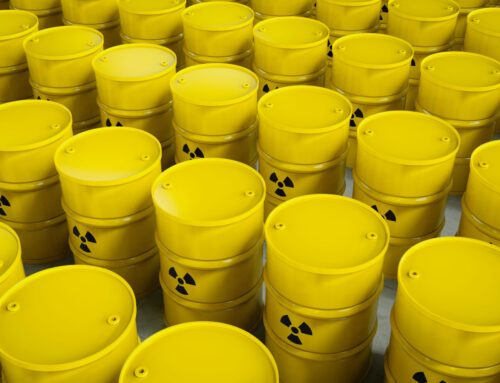Every year between 350 and 400 million tonnes of plastics is produced globally. Around one-quarter of this amount is recycled or burned in the incinerators while the rest is dumped in the landfills or directly in the environment. Fourteen million tonnes of plastics end up in the ocean yearly, an extreme example of which is the Great Pacific Garbage Patch, with more than 1.8 trillion plastic pieces and an estimated weight of 80,000 tons.
Although most of the plastics are not toxic per se, larger pieces swallowed by animals can cause digestive disbalance, injuries to the inner organs and eventually death. On the other hand, chemical additives to the plastics have toxic effects on plant-, animal- and the environmental microbiomes. For example, plastic leachates from high-density polyethylene (HDPE) and polyvinylchloride (PVC) are toxic for Prochlorococcus, one of the most numerous photosynthetic microorganisms in the ocean, thereby negatively contributing to the climate change. Bisphenol A, a common plastics additive, disturbs the gut microbiome of the host, causing gut dysbiosis. Furthermore, plastic pieces smaller than five millimeters, also known as microplastics, serve as carriers for other microorganisms, potentially contributing to the disbalances in the environmental microbiomes and to the spread of pathogens. Another way of microbiome disruption is use of carbon from plastics as a food source by certain microbes in the community. Microplastics also have other toxic effects in animals, including modulation of the endocrine system, changes in the gut-blood barrier and the gut microbiome.
Unfortunately, this is not an exhaustive list of the negative effects of the plastic pollution on the living organisms and the environment.
How microbiomes can help bioremediation of the plastic waste?
Bioremediation is a process in which living organisms are used to remove contamination from the environment (including contamination by plastics). In this process, microorganisms play a crucial role.
Up to date, more than 400 microbial species with the ability to degrade plastics have been described. Some of these species have been isolated from animal and plant microbiomes. Examples include plastic-degrading bacteria from the gut microbiomes of insects such as wax moths or mealworms and fungi from grass plants. Majority of the plastic-degrading microorganisms, however, come from the environmental microbiomes such as soil or the waste-processing sites.
There is a variable amount of evidence for microbial degradation of different types of plastics. For some of the most common plastic types such as polypropylene, nylon, polystyrene and polyvinyl chloride, evidence is not that strong. Weaker microbial degradation of certain plastic types can be due to the incomplete degradation of the substrate or a lower efficiency in the mixed waste. Concerning current global pace of accumulation of the plastic waste, discovery of new microbes and microbial communities with new metabolic pathways for plastic degradation is urgently needed.
Basically, there are two approaches to find new microbes for bioremediation: Systems Biology and Metabolic Engineering.
Systems biology approach is using advances in technologies such as metagenomics, metatranscriptomics, proteomics and metabolomics, as well as in data science. Common goal of these methods is to find new microbes which can degrade toxic pollutants by exploring complex networks and their interconnection during various biological processes at the molecular, cellular, population, community, and ecosystem levels.
Metabolic engineering approach involves engineering of already existing metabolic pathways or the introduction of new catabolic pathways in different microbial hosts. This can, for example, improve the yield and function of desired enzymes or introduce completely new biodegradation functions in new host cells that are better compatible with the other members of the microbial community.
With the decreasing prices in sequencing and the “omics” technologies, as well as in development of the new computational tools, we hope to see a rapid increase in discovery of new microbes and microbiomes for more efficient bioremediation of plastics and other environmental pollutants.
– Follow us in the next episode of this serial, when we will discuss the role of microbiomes in bioremediation of the other organic pollutants, heavy metals, radioactivity and others….
Literature:
- Danso, D., Chow, J. & Streit, W. R. Plastics: Environmental and Biotechnological Perspectives on Microbial Degradation. Appl Environ Microbiol 85, e01095-19 (2019).
- Marine Pollution. https://www.iucn.org/resources/issues-briefs/marine-plastic-pollution# (2021).
- Lear, G. et al. Plastics and the microbiome: impacts and solutions. Environmental Microbiome 16, 2 (2021).
- Yong, C., Valiyaveettil, S. & Tang, B. Toxicity of Microplastics and Nanoplastics in Mammalian Systems. IJERPH 17, 1509 (2020).
- Koitabashi, M. et al. Degradation of biodegradable plastic mulch films in soil environment by phylloplane fungi isolated from gramineous plants. AMB Expr 2, 40 (2012).
- Dangi, A. K., Sharma, B., Hill, R. T. & Shukla, P. Bioremediation through microbes: systems biology and metabolic engineering approach. Critical Reviews in Biotechnology 39, 79–98 (2019).





